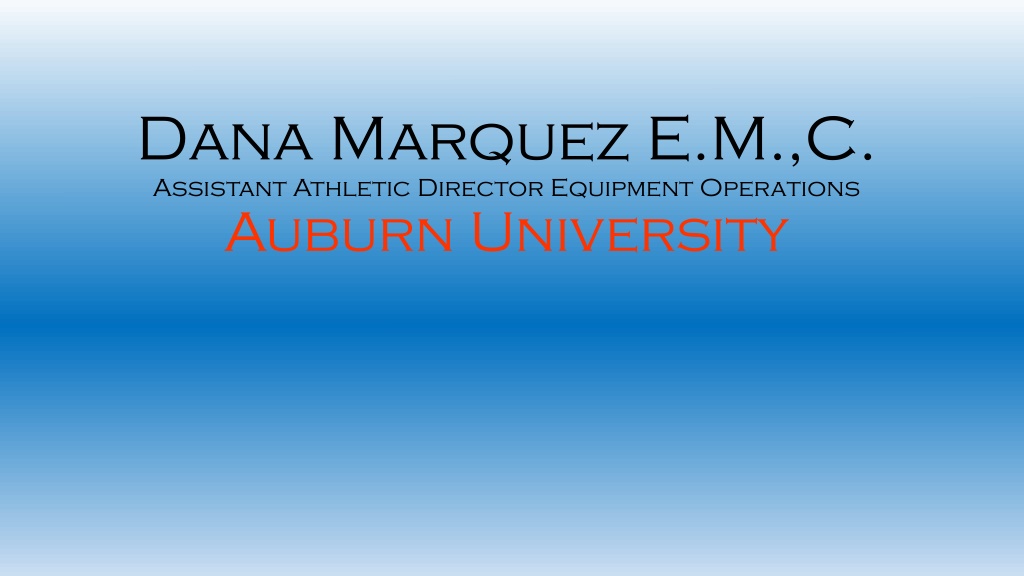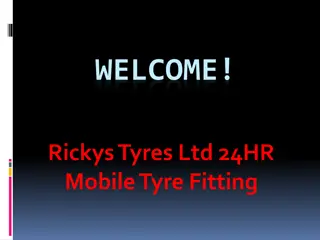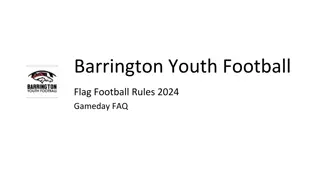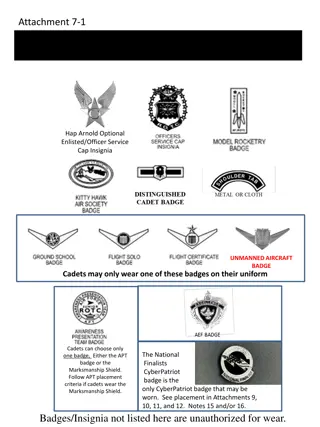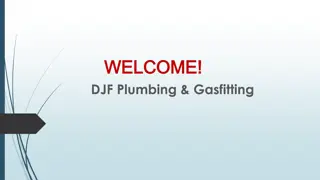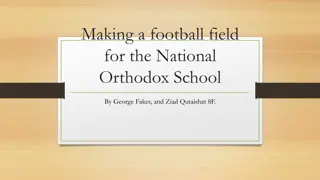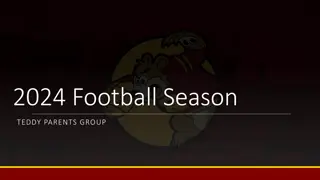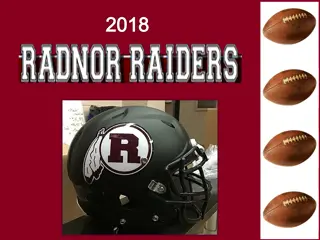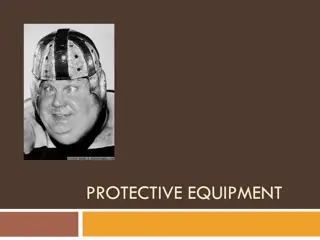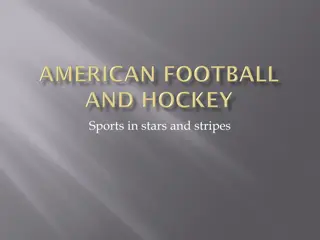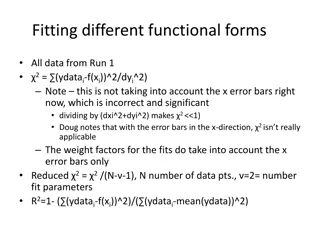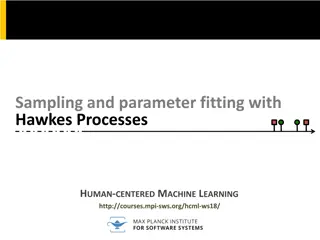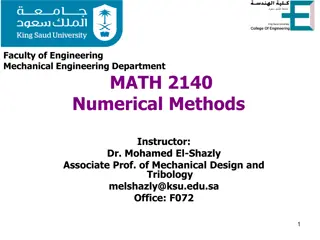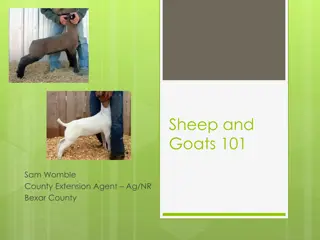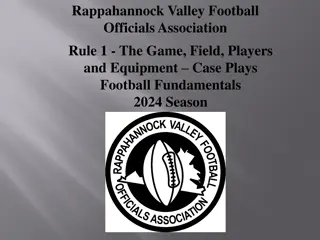Guide to Properly Fitting Protective Football Headgear
Learn the 11 essential steps to fitting protective football headgear correctly. Ensure proper measurements, alignment, chin strap adjustments, and facemask attachment for maximum safety and comfort. Follow these guidelines to provide optimal protection for athletes during gameplay.
Download Presentation

Please find below an Image/Link to download the presentation.
The content on the website is provided AS IS for your information and personal use only. It may not be sold, licensed, or shared on other websites without obtaining consent from the author. Download presentation by click this link. If you encounter any issues during the download, it is possible that the publisher has removed the file from their server.
E N D
Presentation Transcript
Dana Marquez E.M.,C. Assistant Athletic Director Equipment Operations Auburn University
11 Steps to Fitting Protective Football Headgear Step 1: Know your headgear Manufacturer Model Parts Manufacturer fitting guidelines Step 2: Measure the head to be fit Wet head to simulate sweat Measure using a caliper or tape measure Use reference points for placement of measuring device Approximately 1 above the eyebrows (figure 1) Across the occipital ridge or occipital lobe (figure 2) Step 3: Place headgear on head Depending on the helmet, demonstrate the proper method to place the headgear on the head NOTE: Headgear that require facemasks should be fitted WITHOUT facemasks Step 4: Check for proper spacing in the front (one)1 of space front pad or front sizer Step 5: Check for proper earhole alignment ear hole of the headgear look directly into the ear canal.
Step 6: Check for proper c-spine alignment and occipital lobe contact posterior of the athlete and the helmet headgear covers cervical vertebrae 1 and 2 back padding or sizer Step 7: Proper chin strap adjustment and attachment Chin cup size Chin within chin cup Bottom attachment sights Top attachment sights Middle attachment sights (when applicable) Chin strap is evenly placed Chinstrap should not slide or move easily Step 8: Crown pressure and check for movement and contact If they do not feel contact: Step 9: Apply side to side pressure and check for movement and contact Movement of the headgear should cause movement of the shin of the face and forehead area. If there is free movement: Step 10: Apply front to back pressure and check for movement and contact When the helmet moves the skin on the forehead should move as well. If the helmet moves freely Step 11: Proper facemask attachment and spacing Proper facemask for the helmet Assure that the athlete has no less than (one) 1 of
Helmet WARNING NO HELMET CAN PREVENT SERIOUS HEAD OR NECK INJURIES A PLAYER MIGHT RECEIVE WHILE PARTICIPATING IN FOOTBALL. Do not use this helmet to butt, ram or spear an opposing player. This is in violation of the football rules and such use can result in severe head or neck injuries, paralysis or death to you and possible injury to your opponent. Contact in football may result in CONCUSSION-BRAIN INJURY which no helmet can prevent. Symptoms include: loss of consciousness or memory, dizziness, headache, nausea or confusion. If you have symptoms, immediately stop playing and report them to your coach, trainer or parents. Do not return to the game or practice until all symptoms are gone and you have received MEDICAL CLEARANCE. Ignoring this warning may lead to another and more serious or fatal brain injury. Shoulder Pad Riddell WARNING Football is a dangerous contact sport which may result in serious injuries or even death. Although our equipment is designed to help reduce the risk of such injuries, there is no guarantee that any injury will be prevented by the use of this equipment. Shoulder Pad Douglas WARNING This piece of protective equipment is designed to minimize the possibility of injury to the specific body part which it covers. Use of this equipment does not guarantee that you will be protected from serious, disabling, or permanent injury while playing football. Any modification or alteration could reduce the protective capacity. Player Print Name____________________________________ Players Signature_____________________________________ Date: _______________________________________________
Thank you for your time and good luck this season.
